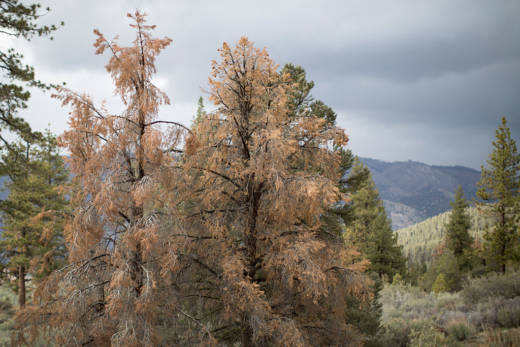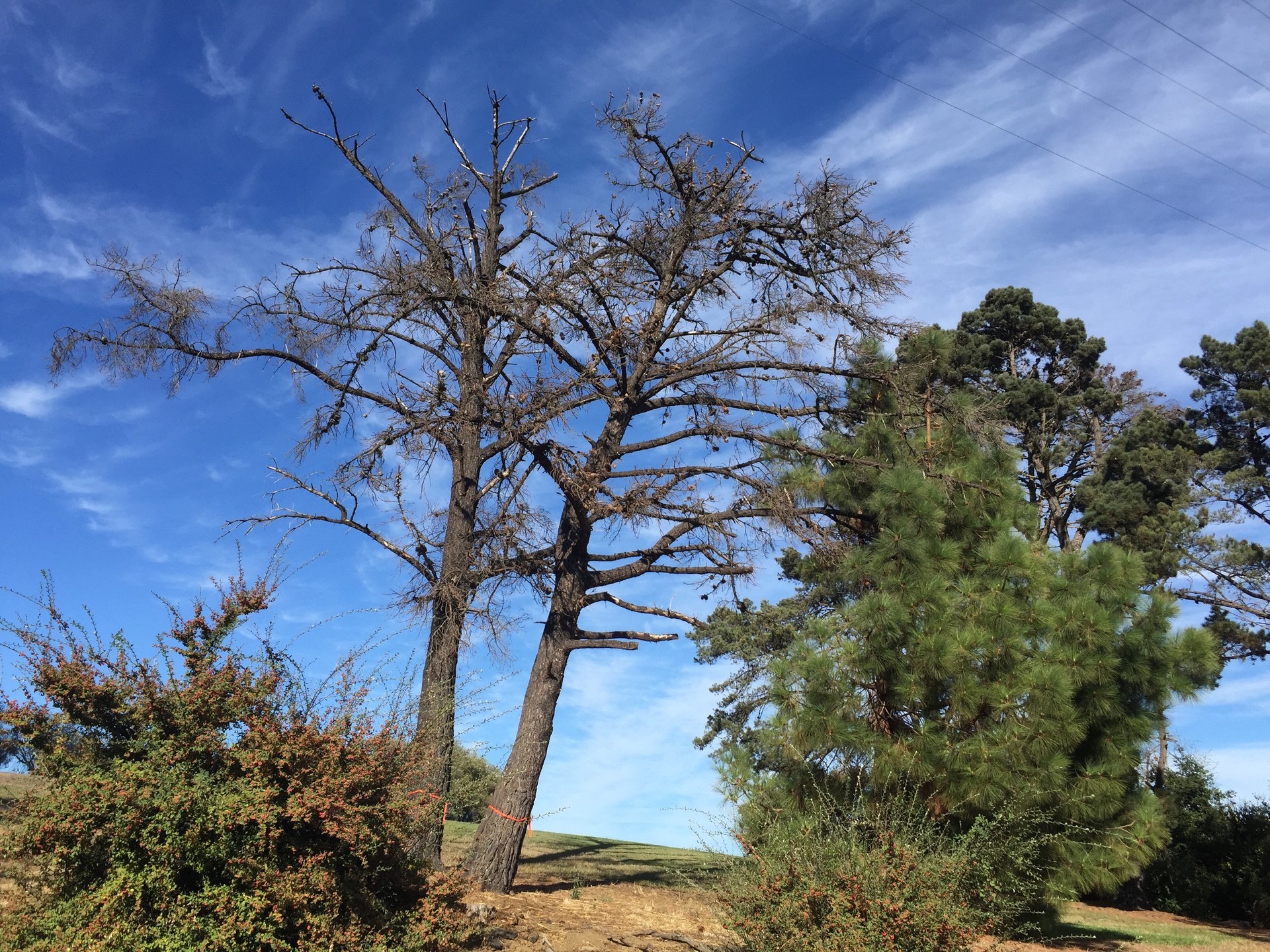The California drought has killed more than 102 million trees in a die-off of forests that increases the risk of catastrophic wildfires and other threats to humans, officials said Friday.
The latest aerial survey by the U.S. Forest Service shows there are 36 million more dead trees since May in the state and there has been a 100 percent increase since 2015.
“These dead and dying trees continue to elevate the risk of wildfire, complicate our efforts to respond safely and effectively to fires when they do occur and pose a host of threats to life and property,” U.S. Agriculture Secretary Tom Vilsack said in a statement.
California has endured five years of drought marked by a record low mountain snowpack and warm temperatures. The drought has left trees thirsty and prone to infestation by bark beetles.
Late last year, Gov. Jerry Brown formed a task force charged with finding ways to remove the trees that threaten motorists and communities.


